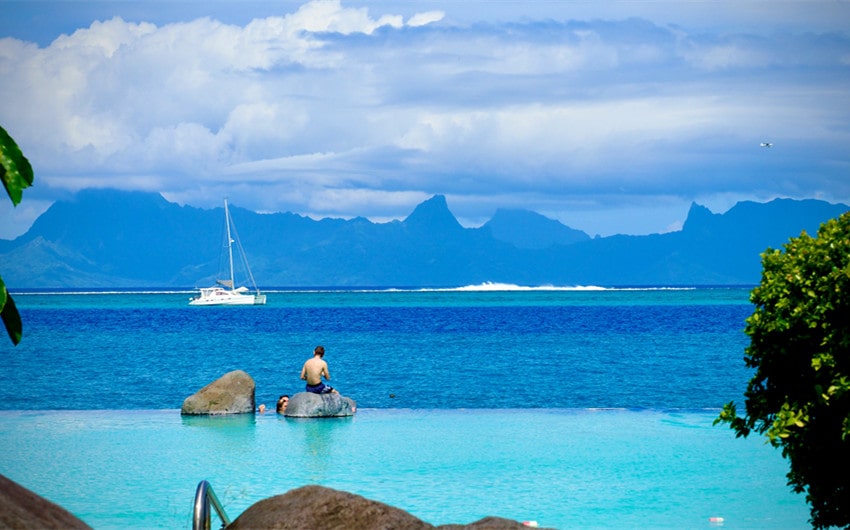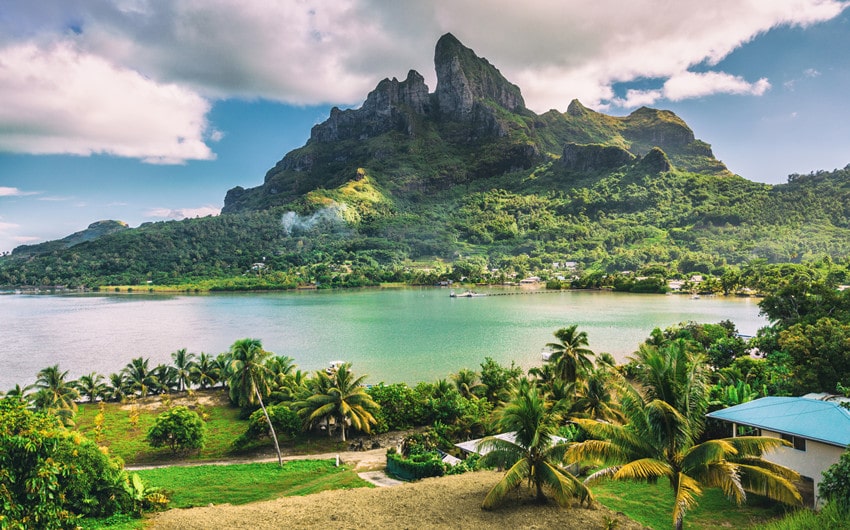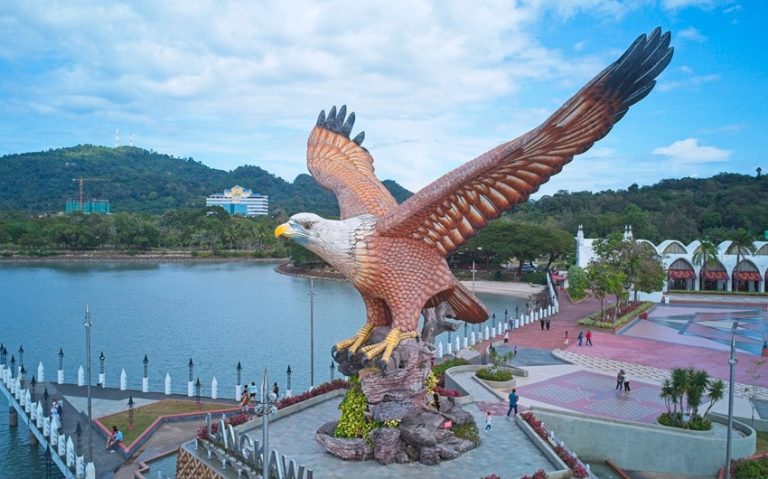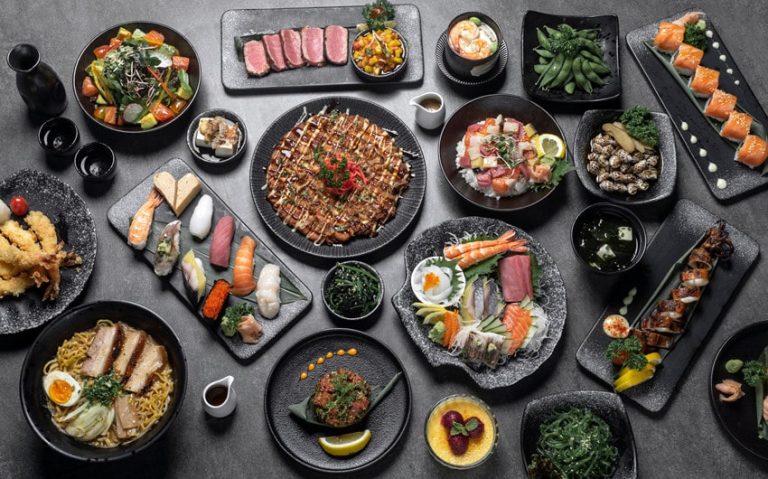Tahiti is a tropical paradise known for its stunning landscapes, rich culture, and vibrant history. Whether you’re planning a trip or just curious, learning more about this beautiful island is always fascinating.
In this article, we’ll share some intriguing facts about Tahiti that highlight its unique charm and allure. From its volcanic origins to its famous black pearls, these facts will give you a deeper appreciation for what makes Tahiti so special. Dive in and discover the wonders of this enchanting island.
24 Fun Facts About Tahiti

1. Tahiti Is the Largest Island in French Polynesia
Tahiti is the biggest and most famous island among the 118 islands and atolls that make up French Polynesia. Covering approximately 1,045 square kilometers, it forms the cultural and political heart of this overseas collectivity of France.
Tahiti is divided into two parts: Tahiti Nui (the larger, northwestern part) and Tahiti Iti (the smaller, southeastern part). This stunning island is known for its lush, mountainous landscapes and vibrant coral reefs, making it a key destination in the South Pacific.
2. Papeete Is the Capital City
Papeete, located on the northwest coast of Tahiti, serves as the capital city of both Tahiti and French Polynesia. It’s the largest city on the island and a bustling hub of activity. Papeete is known for its lively markets, especially the famous Papeete Market, where you can find fresh produce, local crafts, and Tahitian black pearls.
The city is also home to key government buildings, cultural institutions, and the main port, making it the economic and administrative center of French Polynesia.
3. Tahiti Was Formed by Volcanic Activity
Tahiti’s dramatic landscape is the result of ancient volcanic activity. The island is part of a volcanic archipelago, and its rugged terrain includes soaring peaks and deep valleys. Mount Orohena, the highest peak on the island, stands at 2,241 meters and offers breathtaking views.
The island’s volcanic origin also contributes to its rich soil, which supports lush vegetation and vibrant flora. The volcanic rock formations and craters add to the island’s natural beauty and geological interest.
4. Black Sand Beaches Are Common
One of the unique features of Tahiti is its black sand beaches, which are formed from volcanic minerals and lava fragments. These beaches, such as La Plage de Maui and Papenoo Beach, provide a striking contrast to the typical white sand beaches found on many tropical islands.
The black sand not only creates a dramatic visual effect but also absorbs heat quickly, making it warm to the touch. These beaches are popular spots for both locals and tourists looking to enjoy the sun and surf in a unique setting.
5. French and Tahitian Are the Official Languages
The official languages of Tahiti are French and Tahitian, reflecting the island’s colonial history and its indigenous culture. French is widely spoken and is used in government, business, and education, while Tahitian is spoken by the local population and is an important part of cultural and traditional practices.
Tahitian, a Polynesian language, is rich in history and is taught in schools to preserve the island’s heritage. Many Tahitians are bilingual, comfortably switching between both languages in daily life.
6. The Tiare Flower Is a National Symbol
The Tiare flower, also known as the Tahitian gardenia, is a beloved national symbol of Tahiti. This beautiful white flower has a sweet, intoxicating fragrance and is often worn behind the ear or used in traditional leis. The Tiare flower plays a significant role in Tahitian culture and is associated with hospitality and welcome.
It is also used in various cosmetic and medicinal products, such as Monoi oil, which is made by infusing coconut oil with Tiare petals. The Tiare flower is a ubiquitous presence in Tahitian life, from ceremonial events to everyday adornment.
7. Traditional Dance Is Vibrant and Expressive
Tahiti is renowned for its traditional dance, known as Ori Tahiti. This vibrant and expressive form of dance is a significant aspect of Tahitian culture, characterized by energetic movements, rhythmic drumming, and colorful costumes. Dancers often perform in groups, showcasing their skills at cultural festivals, ceremonies, and celebrations.
The dance is accompanied by traditional music played on instruments like the pahu (drum) and ukulele. Ori Tahiti is more than just entertainment; it is a way to tell stories, express emotions, and preserve the rich cultural heritage of the island.
8. Tattoos Are a Significant Cultural Tradition
Tattooing has deep cultural significance in Tahiti, symbolizing identity, status, and heritage. The word “tattoo” itself originates from the Tahitian word “tatau.” In ancient times, tattoos were used to mark rites of passage, achievements, and social status. Both men and women would be intricately tattooed with patterns that held specific meanings.
Today, traditional tattooing remains an important practice, blending ancient techniques with modern artistry. The designs often include motifs inspired by nature, mythology, and daily life, reflecting the wearer’s personal story and connection to their culture.
9. The Heiva Festival Celebrates Polynesian Culture
Heiva i Tahiti is a major cultural festival held annually in July, celebrating Polynesian heritage through music, dance, sports, and crafts. This vibrant festival dates back to 1881 and has become a highlight of the Tahitian cultural calendar.
During Heiva, communities from across French Polynesia gather to compete in traditional sports like stone lifting, outrigger canoe racing, and javelin throwing. The festival also features elaborate dance and music performances, showcasing the talents of local artists. Heiva i Tahiti is a celebration of Tahitian identity, unity, and the enduring spirit of Polynesian culture.
10. Tahiti Is Famous for Its Black Pearls
Tahiti is world-renowned for its exquisite black pearls, also known as Tahitian pearls. These pearls are cultivated in the warm waters of French Polynesia and are prized for their unique colors, which can range from black to shades of green, blue, and purple.
Black pearls are a significant export product for Tahiti and a symbol of luxury and elegance. They are often crafted into beautiful jewelry, attracting collectors and enthusiasts from around the globe. The process of farming these pearls is intricate and requires skill and patience, making each pearl a true masterpiece of nature.
11. The Island Inspired Famous Artists
Tahiti has inspired many famous artists, most notably the French painter Paul Gauguin. Gauguin first visited Tahiti in 1891, seeking to escape European civilization and immerse himself in what he considered a more “primitive” and pure lifestyle. The island’s natural beauty, vibrant colors, and rich culture profoundly influenced his work.
During his time in Tahiti, Gauguin produced some of his most famous paintings, capturing the essence of Tahitian life and landscapes. His art remains celebrated for its bold use of color and unique perspective, and his legacy continues to draw art lovers to the island.
12. The Bounty Mutiny Has Tahitian Connections
The infamous mutiny on the HMS Bounty, which took place in 1789, has strong connections to Tahiti. The Bounty had sailed to Tahiti to collect breadfruit plants to transport to the Caribbean. During their stay, the crew developed close relationships with the Tahitian people, which contributed to the eventual mutiny led by Fletcher Christian against Captain William Bligh.
After the mutiny, some of the mutineers returned to Tahiti, while others sailed to Pitcairn Island. The story of the Bounty mutiny has been retold in numerous books and films, making Tahiti a notable part of this dramatic historical event.
13. Tahiti Hosts World-Class Surfing Competitions
Tahiti is a renowned destination for surfers from around the world, thanks to its powerful and challenging waves. The island hosts world-class surfing competitions, particularly at Teahupo’o, which is famous for its heavy, glassy waves that break over a shallow reef.
Teahupo’o is considered one of the most dangerous and thrilling surf spots globally, attracting elite surfers to compete in events like the Billabong Pro Tahiti, part of the World Surf League Championship Tour. The sheer power and beauty of Teahupo’o waves make it a bucket-list destination for surfing enthusiasts.
14. Vanilla Is a Key Agricultural Product
Tahiti is known for producing some of the world’s finest vanilla, particularly the highly prized Tahitian vanilla (Vanilla tahitensis). This variety of vanilla is renowned for its unique, floral aroma and flavor, which sets it apart from other types of vanilla.
Vanilla cultivation is a labor-intensive process that involves hand-pollination and careful curing of the beans. Tahitian vanilla is used in gourmet cooking, baking, and perfumery. It is a significant agricultural product for the island, contributing to the local economy and global culinary arts.
15. The Lagoon Is Ideal for Water Sports
Tahiti’s stunning lagoon, with its crystal-clear waters, is perfect for a variety of water sports and recreational activities. The calm, warm waters of the lagoon are ideal for snorkeling, allowing visitors to explore vibrant coral reefs and observe diverse marine life.
Scuba diving is also popular, with opportunities to see sharks, rays, and colorful fish. Additionally, the lagoon is perfect for paddleboarding, kayaking, and jet skiing. The diverse water sports available in Tahiti’s lagoon make it a paradise for adventure seekers and nature lovers alike.
16. Celebrity Honeymoon Destination
Tahiti is a popular honeymoon destination, especially among celebrities seeking a romantic and secluded getaway. The island’s luxurious resorts, overwater bungalows, and stunning natural beauty provide an idyllic setting for newlyweds.
Celebrities such as Marlon Brando, Nicole Kidman, and Keith Urban have chosen Tahiti for their honeymoons, drawn by its serene beaches, turquoise waters, and exclusive accommodations. Tahiti’s reputation as a romantic paradise makes it a top choice for couples looking to celebrate their love in a dreamy, exotic location.
17. Unique Wildlife Thrives Here
Tahiti is home to a variety of unique wildlife, both on land and in the surrounding waters. The island’s diverse ecosystems support species that are found nowhere else on Earth. Notable examples include the Tahiti monarch, an endangered bird species, and the Moorea sandpiper.
The island’s marine life is equally impressive, with coral reefs teeming with vibrant fish, sea turtles, and dolphins. Conservation efforts are in place to protect these unique species and their habitats, ensuring that Tahiti’s natural beauty and biodiversity are preserved for future generations.
18. Conservation Efforts Protect Coral Reefs
Tahiti’s coral reefs are among the most beautiful and diverse in the world, playing a crucial role in the marine ecosystem. Recognizing their importance, significant conservation efforts are underway to protect these reefs from threats such as climate change, pollution, and overfishing.
Organizations and local communities work together to implement sustainable practices, create marine protected areas, and conduct research on reef health. These efforts help preserve the vibrant coral reefs, ensuring they continue to thrive and support marine life. Visitors can experience the beauty of these reefs through eco-friendly snorkeling and diving tours.
19. Mount Orohena Is the Highest Peak
Mount Orohena stands at an impressive 2,241 meters (7,352 feet), making it the highest peak in Tahiti. This dormant volcano is part of the island’s rugged and mountainous interior, offering breathtaking views and challenging hiking opportunities.
Adventurous hikers can explore its lush trails, which are rich with diverse flora and fauna. The trek to the summit is demanding but rewarding, with panoramic views of the island and the surrounding ocean. Mount Orohena is a natural landmark that highlights Tahiti’s volcanic origins and stunning landscapes.
20. Hollywood Loves Tahiti
Tahiti’s breathtaking scenery has made it a popular location for Hollywood films. The island’s lush landscapes, turquoise waters, and idyllic beaches provide the perfect backdrop for movies. One of the most famous films shot in Tahiti is the 1935 classic “Mutiny on the Bounty,” starring Clark Gable and Charles Laughton.
The story, based on the real-life mutiny aboard the HMS Bounty, brought international attention to Tahiti’s beauty. More recently, films like “The Bounty” (1984) with Mel Gibson and Anthony Hopkins, and “Love Affair” (1994) with Warren Beatty and Annette Bening, have showcased Tahiti’s stunning scenery, further cementing its place in popular culture.
21. Tahiti Has a Rich Mythology
Tahiti’s culture is deeply rooted in Polynesian mythology, which includes a rich tapestry of gods, demigods, and legends. These myths explain natural phenomena, historical events, and cultural practices. One well-known figure in Tahitian mythology is Ta’aroa, the creator god who emerged from a shell and created the world.
Another significant figure is Hina, the goddess of the moon, who is associated with various myths about creation and love. These stories are passed down through generations, often through oral traditions, dance, and art, keeping the rich cultural heritage alive.
22. Tahiti Is Part of the “Polynesian Triangle”
Tahiti is a central point in the “Polynesian Triangle,” a region of the Pacific Ocean with Hawaii, New Zealand, and Easter Island at its corners. This vast area is home to the Polynesian people, known for their seafaring skills and shared cultural traits.
The Polynesian Triangle covers a significant portion of the Pacific Ocean and is renowned for its diverse and rich cultural heritage. The people of this region have a long history of navigation, exploration, and settlement, with Tahiti serving as a cultural and historical hub within this expansive triangle.
23. The Lagoon of Bora Bora Is Nearby
While not part of Tahiti itself, Bora Bora is one of Tahiti’s most famous neighboring islands, known for its stunning lagoon. Located just northwest of Tahiti, Bora Bora’s lagoon is surrounded by a barrier reef and offers crystal-clear waters, vibrant coral gardens, and abundant marine life.
Visitors to Tahiti often include a trip to Bora Bora to experience its world-renowned beauty. The lagoon is ideal for snorkeling, diving, and other water sports, making it a must-see destination for those exploring the islands of French Polynesia.
24. Tahiti’s Economy Relies on Tourism
Tourism is a major component of Tahiti’s economy, attracting visitors from around the globe to experience its natural beauty, vibrant culture, and luxurious accommodations. The island offers a range of attractions, from historical sites and museums to outdoor adventures and water activities.
Resorts, hotels, and guesthouses provide a variety of lodging options to suit different tastes and budgets. Tahiti’s unique appeal, with its blend of tradition and modern amenities, makes it a top destination for travelers seeking an exotic and unforgettable experience.







